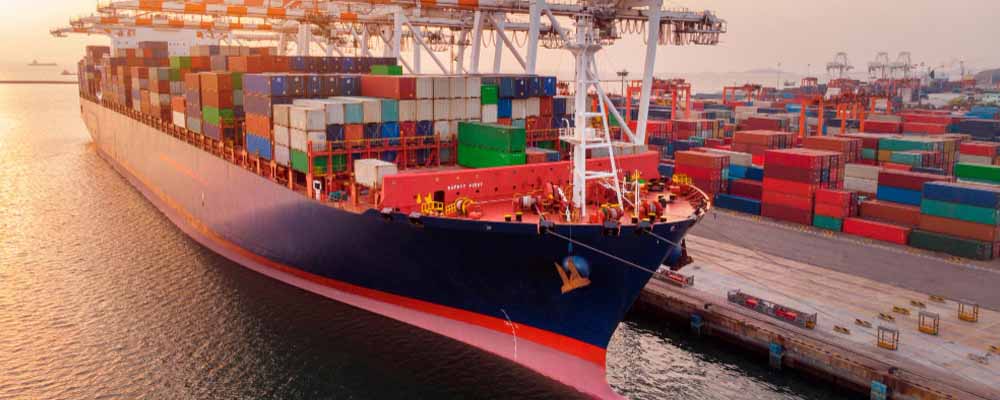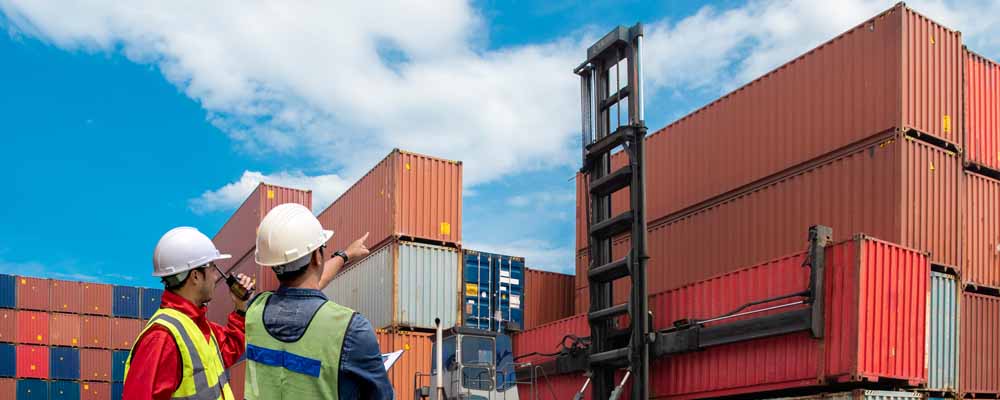 The growing economy of Vietnam is attributed to industrialization and urbanization, especially in the manufacturing and services industries. The rising demand for consumer goods paves the way for exporters to capitalize on this growth.
The growing economy of Vietnam is attributed to industrialization and urbanization, especially in the manufacturing and services industries. The rising demand for consumer goods paves the way for exporters to capitalize on this growth.
For insights on importation to Vietnam, continue reading this blog post. Understanding the following information about logistics and processes can help you jumpstart this business venture.
 What are the Ways to ship to Vietnam?
What are the Ways to ship to Vietnam?
Numerous shipping methods can be selected for transporting goods to Vietnam- air freight, sea freight, courier services, road and rail freights. Considerations regarding urgency, cargo volume, budget, and specific requirements of the shipment affect the mode of shipping.
Air freight holds the fastest delivery times and is perfect for time-sensitive, high-value or perishable shipments. Sea freight, on the other hand, is a cost-effective choice for shipping large quantities and non-urgent shipments both for full container loads (FCL) and less than container loads (LCL).
Courier services such as DHL, FedEx, and UPS are ideal for small to medium-sized goods and can be conveniently delivered to a consumer’s doorstep. Lastly, road freight and rail freight may be practical options for products coming from nearby countries with land borders with Vietnam.
What are the Main Ports in Vietnam?
The vast coasts of Vietnam offer strategic international trade points. The major ports discussed below boost the country’s maritime connectivity.
As one of Vietnam’s busiest ports and one of the most modern seaports in Southeast Asia, Hai Phong Port houses advanced navigation and networking facilities. Da Nang Port connects North and South Vietnam and can accommodate different types of cargo-containers, bulk commodities, and petroleum products. Saigon Port which is in southern Vietnam along the Saigon River, is the largest port in Vietnam and is an important local and international trade center.
| Port | Average Annual TEU’s |
| Hai Phong port | 5.7 Million TEU |
| Da Nang Port | 114,000 TEU |
| Saigon Port | 7.9 Million TEU |
| Vung Tau Port | *no available data |
| Quang Ninh Port | *no available data |
How much does it cost to ship a container to Vietnam?
The typical price range of shipping a 20ft container from the United States to Vietnam is $850 to $1530 while a 40ft container can reach up to $4500.
To compute the total cost of shipping to Vietnam, take into account the type of container, the fuel price, the dimensions and weight of the cargo, the shipping company or steamship fees, the origin and destination ports and the shipping route.
Here’s a list of countries and a rough estimate of shipping costs to Vietnam:
| Country | 20ft | 40ft |
| United States | $2500 | $4550 |
| Canada | $2500 | $4550 |
| China | $850 | $1550 |
| Spain | €1150 | €4550 |
| European countries | €1150 | €4550 |
What is the Transit Time when shipping to Vietnam?
The average transit time to ship a container to Vietnam via sea freight is from 4 weeks to 6 weeks. The exact timeline will depend on the shipping method, distance, transportation route, customs clearance, weather conditions, logistic networks, holidays, carrier performance and others.
Below’s a list of average days it takes to ship to Vietnam from various countries:
| Country | Days |
| China | 15 |
| US | 15-52 |
| Europe | 32-40 |
What paperwork is needed for international shipments to Vietnam?
To guarantee a smooth importation process, customs regulations of Vietnam must be followed. Vietnam has a complex tariff schedule, and most goods are subject to import fees with rates depending on the type of items.
The documentation and requirements needed to import to Vietnam are as follows:
- Original Vietnam Moving Inventory
- Commercial invoice
- Packing list
- Bill of landing manifest
- Original bill of lading, sea waybill or airwaybill
- Tax Identification Number in Vietnam
- Importer Registration
- Location of the tariff subheading, and commodity
- Vietnam Customs Value Declaration
- Phytosanitary Export Certificate for agricultural products
- Combined Certificate of Value and Origin
- Trade or company patent in Vietnam stating that the importer is dedicated to importing
- Importer must:
- Be debt-free in Vietnam
- Have a customs broker in Vietnam and power of attorney that authorizes the customs broker to clear with Vietnam Customs.
- Establish economic solvency in Vietnam
- Establish the terms of the Incoterms agreement for importation
As a general rule of import, Vietnam Customs levies import tariffs based on the Cost, Insurance, Freight (CIF) value of the cargo in container shipments, ranging from 0% to 50%. In addition, a value-added tax (VAT) of 0% to 5% applies, calculated on the total price of the import in CIF Incoterm plus the customs tariff.
If the import originates from the European Union or the USA, it may be possible to waive taxes or pay reduced rates given that there is an exemption by international agreement between the parties.
 How do I find a freight forwarder in Vietnam
How do I find a freight forwarder in Vietnam
Partnerships with local freight forwarders, customs brokers, and logistics providers can make the overall shipping process easier. Pangea has extensive partners in Vietnam that can help you navigate regulations and clearance of your goods.
For further information and specific queries, head over to https://pangea-network.com/ .
Frequently Asked Questions
- What is the estimated transit time for shipping a container to Vietnam?
The average transit time to ship a container to Vietnam via sea freight is from 4 weeks to 6 weeks. The exact timeline will depend on the shipping method, distance, transportation route, customs clearance, weather conditions, logistic networks, holidays, carrier performance and others.
- How do you figure out the shipping cost to Vietnam?
The typical price range of shipping a 20ft container from the United States to Vietnam is $850 to $1530 while a 40ft container can reach up to $4500.
To compute the total cost of shipping to Vietnam, take into account the type of container, the fuel price, the dimensions and weight of the cargo, the shipping company or steamship fees, the origin and destination ports and the shipping route.
 Conclusion
Conclusion
In conclusion, the importation process to Vietnam encompasses overseeing factors like customs tariffs, taxes, regulatory requirements, cost analysis, etc. Comprehension of these aspects ultimately leads to a timely and successful importation journey. Working with an experienced logistics partner such as Pangea can be invaluable for supporting your business transactions.
 What are the Ways to ship to Vietnam?
What are the Ways to ship to Vietnam? How do I find a freight forwarder in Vietnam
How do I find a freight forwarder in Vietnam Conclusion
Conclusion